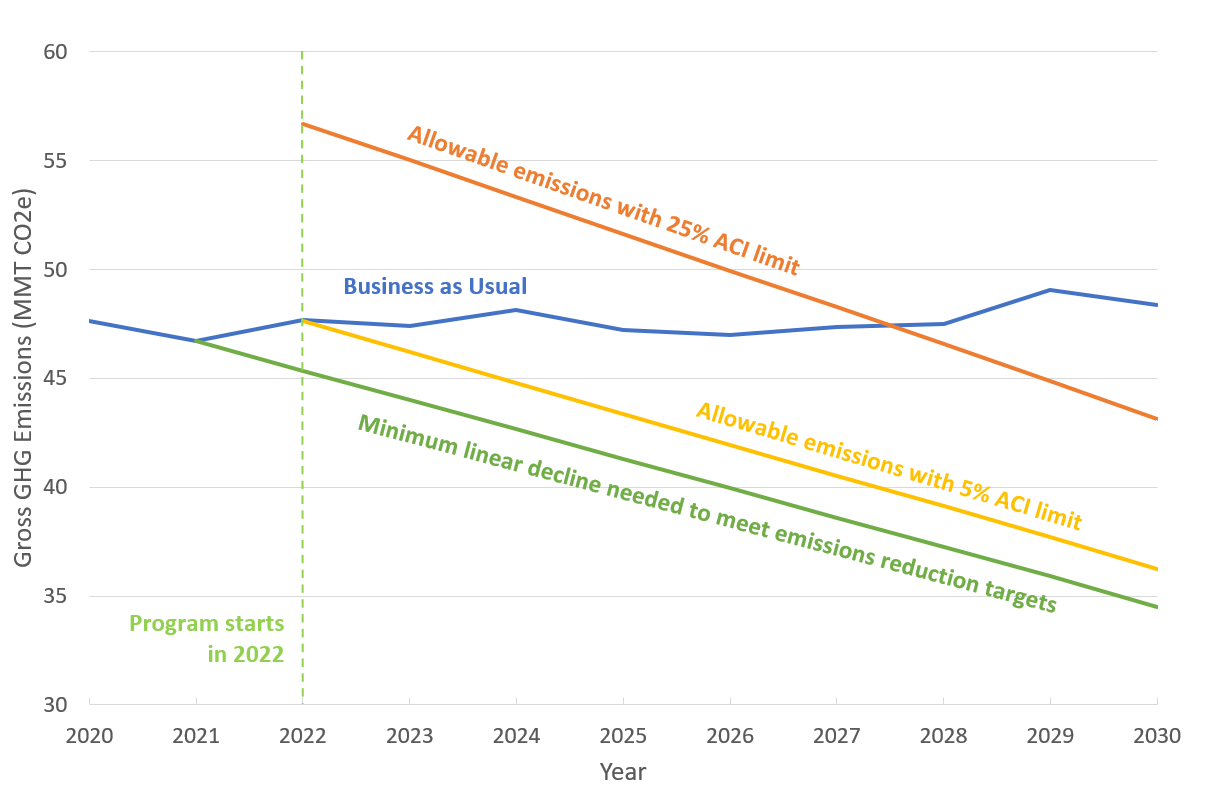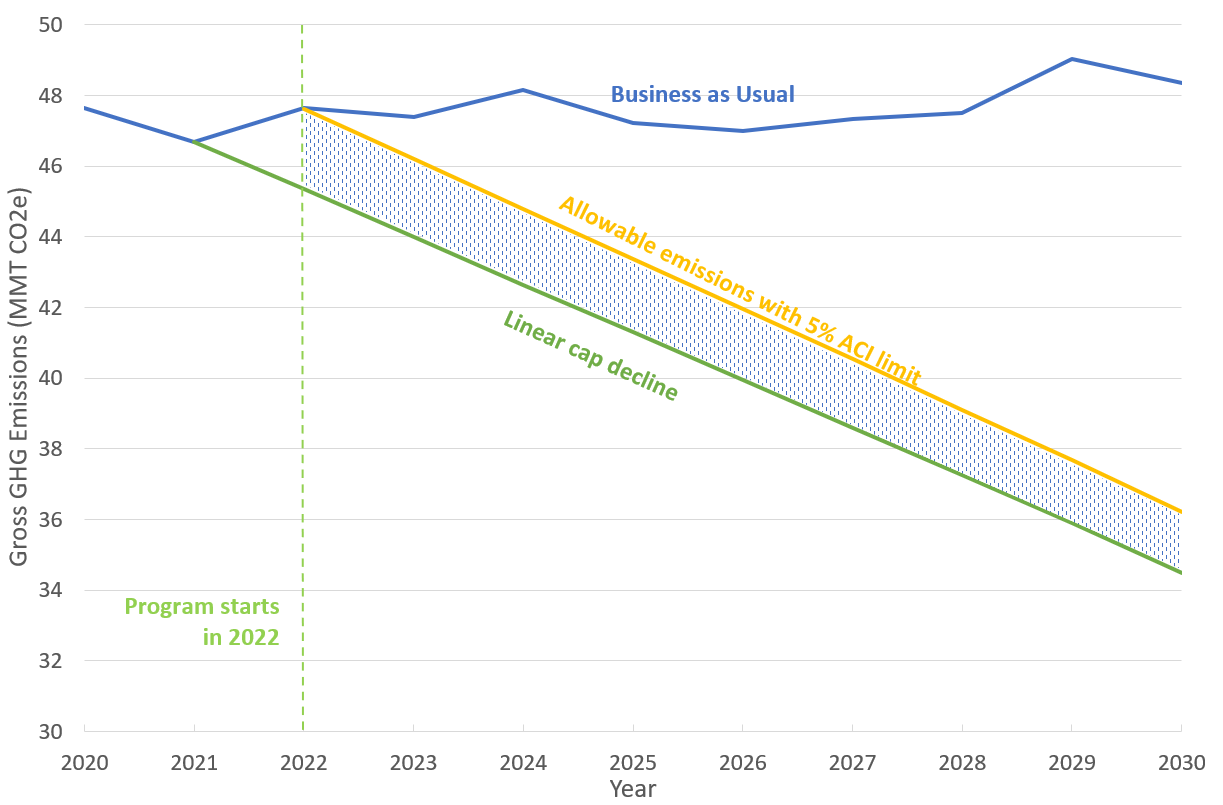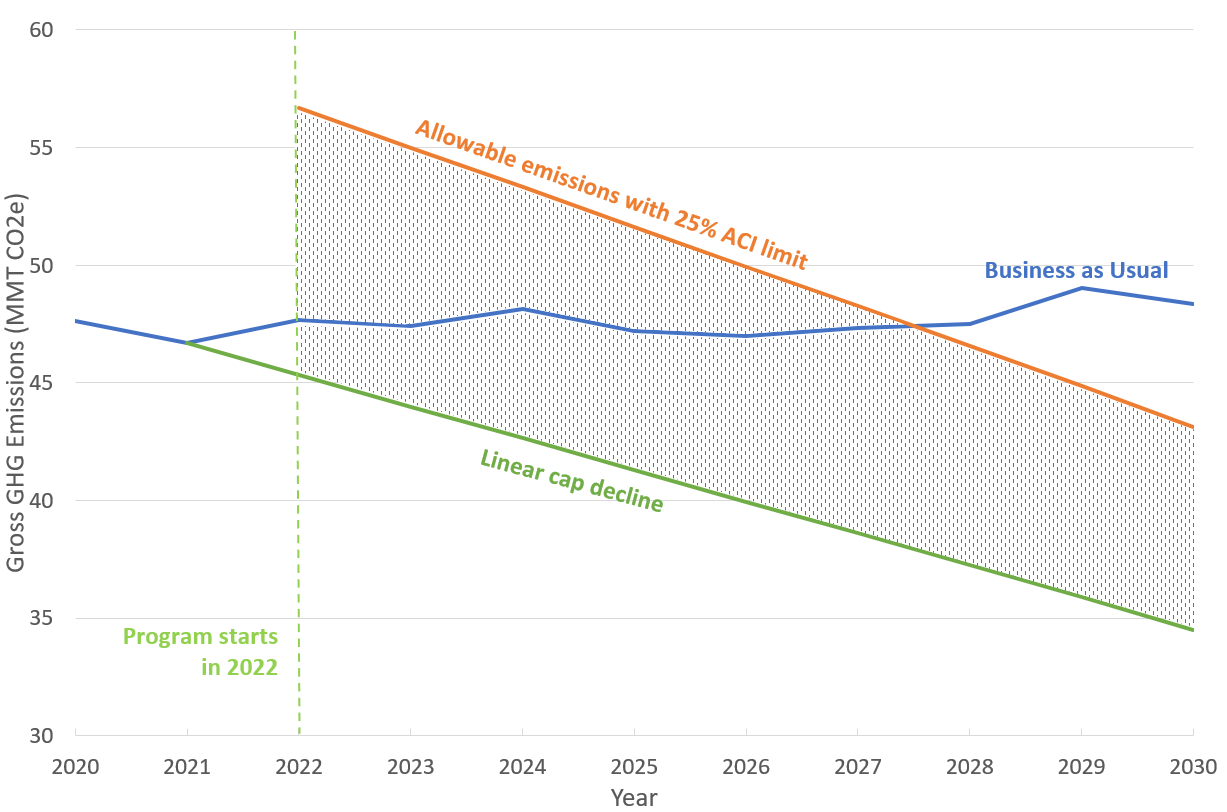On February 19, the U.S. officially reentered the Paris Agreement after being on the sidelines for four years. Even with the federal government beginning to restore and strengthen climate leadership, states still have a critical role to play in putting climate action points on the board. Oregon’s recently launched Climate Protection Program has the potential to deliver critical state-led climate leadership by putting an enforceable limit on emissions across its economy. This limit would decline in line with Oregon’s science-based climate targets, ensuring that the state slashes harmful climate-warming pollution. This is why EDF and the broader environmental community are so concerned about a few policy design suggestions that could severely cripple Oregon’s ability to reach the climate goals the state has already committed to.
In this installment, we want to shine a light on one design element that could provide a backdoor to blowing up the climate budget that Oregon will rely on to achieve its climate goals: the alternative compliance instrument. It may seem like a wonky term, but it’s an incredibly important piece of the puzzle to get right.
What is an alternative compliance instrument?
To understand the “alternative compliance instrument” or ACI, it helps to review how the limit on climate pollution works. The government sets an overall limit on tons of climate pollution and then creates “allowances” equal to that limit. This limit is enforced by requiring large polluters to turn in an allowance for each ton of pollution they put into the atmosphere. Once the allowances run out, no more pollution is allowed. The Department of Environmental Quality (DEQ) is proposing that businesses could also earn these ACIs when they invest in as-yet-to-be approved activities like building electric vehicle infrastructure. These ACIs would be another way, a backdoor if you will, for businesses to meet their obligation under the rules. Instead of turning in an allowance, businesses could turn in an ACI and allowing this could undermine the climate goals the program is designed to achieve.
Why are ACIs a potential climate budget buster?
Creating ACIs in addition to allowances that represent the primary climate budget are a big problem for two reasons. First, the number of allowances is what creates the all-important limit that will keep climate pollution in check. Creating ACIs means increasing that limit. Second, while ACIs are increasing the limit by allowing more tons into the atmosphere, the investments businesses would make to earn those ACIs would also reduce regulated pollution, making the limit easier to achieve. Of course, we want businesses to reduce pollution, but we don’t want them to get double credit for doing so.
DEQ has commissioned economic modeling where they will look at allowing Oregon’s climate budget to increase by between 5-25% with the use of ACIs. The figure below uses EDF’s forecast of Oregon’s climate budget and then shows the possible increase in emissions from covered sources from a use of ACIs. Note that in the 25% scenario the climate budget exceeds even expected business-as-usual emissions until the late 2020s.

The minimum linear decline needed to meet emissions reduction targets shows the emissions reductions needed to stay on a linear, declining trajectory from 2021 BAU emissions to the state’s 2035 target, assuming the first reductions from the program take place in 2022 when the program starts. This is the minimum cap decline trajectory that Oregon’s regulated sources must meet in order to ensure the Oregon achieves its emissions reduction targets. This chart shows the allowable greenhouse gas emissions from regulated sources under the 5% and 25% ACI limits that Oregon is considering, relative to business as usual and the minimum linear decline needed to meet emissions reduction targets.
The problem with ACIs becomes even more stark when we consider the cumulative impacts on climate emissions from Oregon. Under the 5% scenario Oregon’s regulated sources would be allowed to put an extra 18 million metric tons (MMT) of greenhouse gases into the atmosphere between 2022 and 2030, whereas under the 25% scenario they would be allowed to put a whopping 90 extra MMT of climate pollution into the atmosphere. This is significantly larger than the 70 MMT that the program must reduce below business as usual between 2022 and 2030 to be on track to achieve Oregon’s emissions reduction targets. These numbers are represented by the shaded areas under the yellow and red ACI lines.
These graphs make it crystal clear: ACIs could add dangerous amounts of climate pollution to the atmosphere — hurting, not helping Oregon in its efforts to cut pollution on an urgent timeline. Even considering such a large volume of ACIs is unconscionable.
Keep the good, toss the bad
DEQ is trying to frame ACIs as a design feature that can promote equity by directing climate investments towards predominantly, low-income and communities of color, as well as communities overburdened by pollution. Ensuring those communities see benefits from climate investments is critical. This distribution of value is a topic we will revisit in more detail in a future blog. But there many better alternatives for creating investments without raising the limit on climate pollution.
Hewing most closely to DEQ’s existing proposal, one option is for DEQ to approve eligible protocols for climate investments, as DEQ is currently envisioning. For example, DEQ could approve investments for electric vehicle infrastructure or building electrification. But instead of creating new ACIs that are additional to the cap and could blow up Oregon’s climate budget, DEQ could award businesses who make these investments with allowances from within the climate budget. Similarly, if DEQ is going to accept 10% ACIs, they could lower the number of available allowances by 10% as well.
DEQ also believes ACIs are important for “flexibility,” meaning they will make it easier for businesses to comply. Some flexibility measures may be important, but too much flexibility will compromise the program’s core mandate to cut climate pollution at the pace and scale the state needs to avert the most damaging climate impacts. DEQ has many other options — some of which they are already considering — for including appropriate levels of flexibility into their program.
It’s far too late in the game for states like Oregon or the U.S. to put forward ambitious climate policies that don’t deliver pollution reductions on the timeline that science demands. This is a pivotal decade for action, and we need robust climate policy that can truly safeguard Oregonians’ futures.
You can join hundreds of others in emailing the governor to ask for strong climate action here.












One Comment
Your website has provided me with just the information that I actually needed.
We have recently been undertaking analysis upon this
kind of issue for some time, and this has taken a long while to
find a weblog that provides all the information i require.
We start looking forward to studying even more blogs written by you later on, and definitely will research here initially next time I currently have a fact-finding mission. http://health-topic.com/